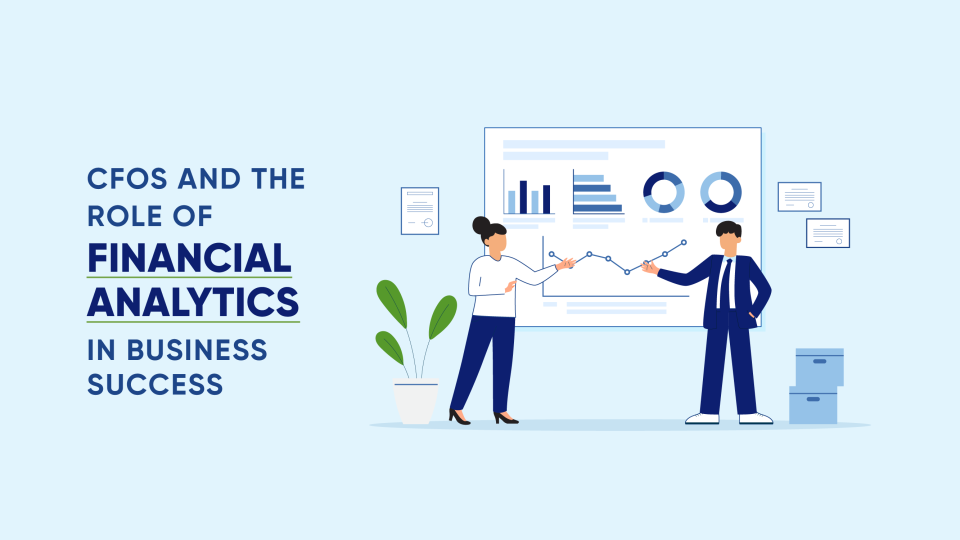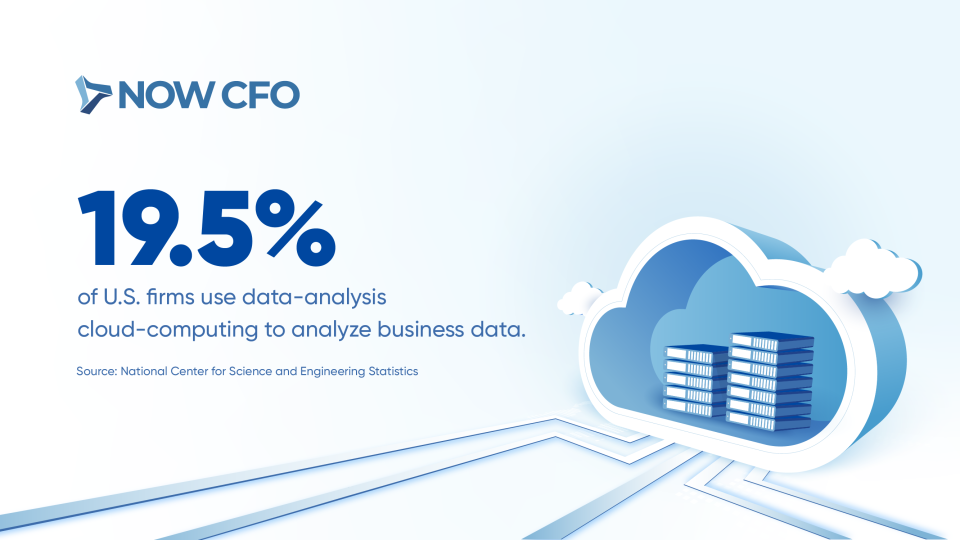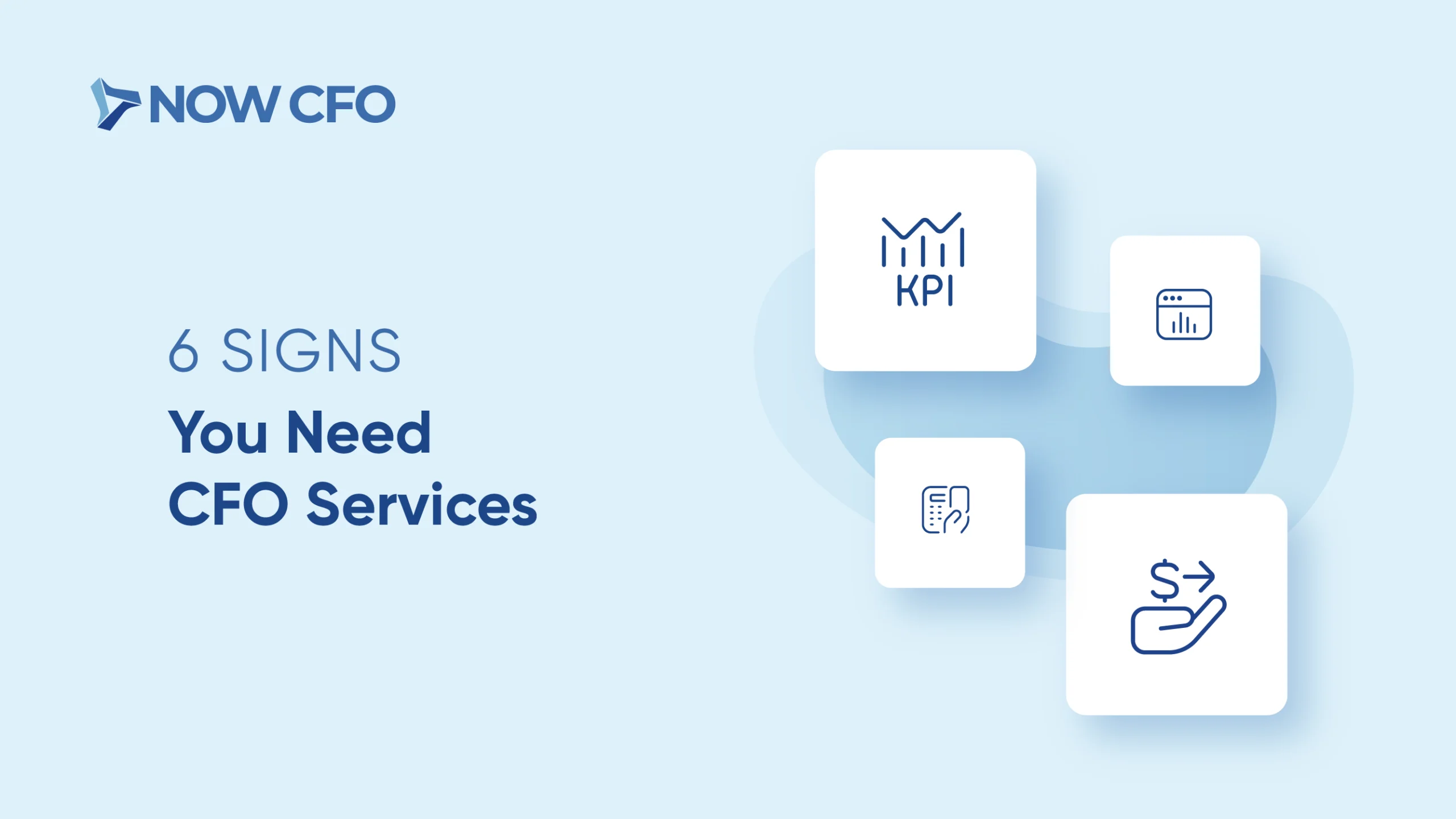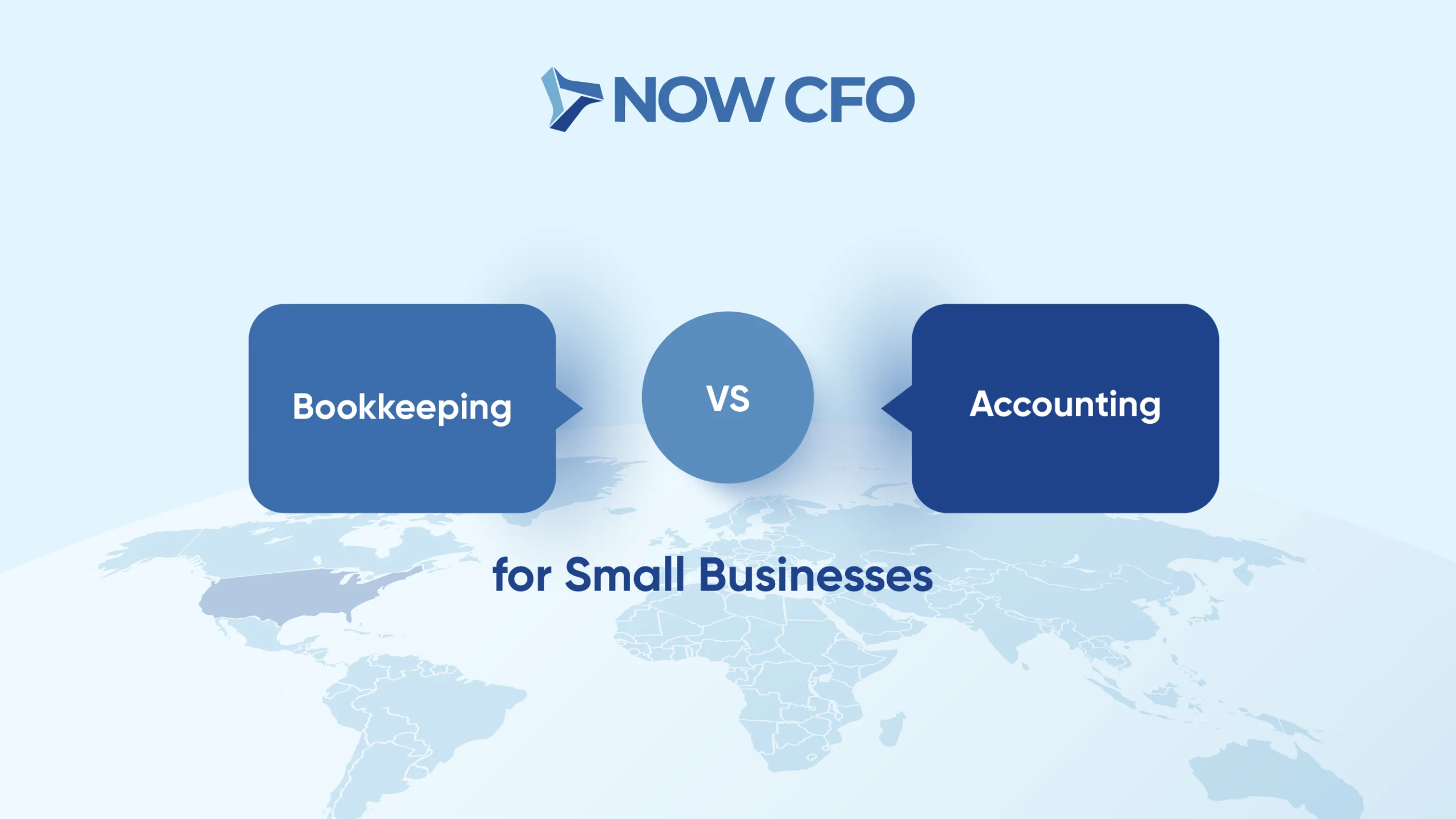
Companies that harness financial data analytics gain a decisive edge by transforming raw figures into actionable strategies. According to BLS, employment of data scientists is projected to grow 36 percent from 2023 to 2033, reflecting surging demand for analytics expertise in business decision-making.
By integrating strategic financial insights into everyday operations, CFOs can anticipate market shifts and optimize resource allocation. Real-time dashboards and predictive models deliver the visibility executives need to respond swiftly to emerging risks and opportunities.
What is Financial Analytics and Why is it Important?
Financial analytics transforms disparate data into clear, actionable intelligence. As organizations generate volumes of financial information, CFOs leverage financial data analytics to distill insights, guiding growth and risk management.
Definition Of Financial Analytics
Financial analytics refers to systematically examining financial data to uncover trends, patterns, and anomalies. CFOs apply statistical models and algorithms to historical and real-time data, enabling them to forecast outcomes and support evidence-based decisions.
By combining transactional records with external economic indicators, firms gain a 360° view of performance. 19.5% of U.S. firms now use data-analysis cloud-computing services to process and analyze business data.

Source: National Center for Science and Engineering Statistics
The Role of Financial Analytics in Business Success
CFOs depend on the role of financial analytics to align financial strategy with operational goals. They turn complex datasets into digestible dashboards and reports that inform leadership. Key functions include:
- Performance Monitoring: Tracking KPIs such as gross margin, return on invested capital (ROIC), and working-capital ratios in real time.
- Forecasting & Planning: Generating predictive models that estimate revenue growth or cash-flow scenarios under different assumptions.
- Risk Identification: Highlighting liquidity crunches, cost overruns, or market-driven variances before they materialize.
- Opportunity Spotting: Using scenario analysis to pinpoint high-margin product lines or underperforming segments ripe for improvement.
Importance of Financial Analytics
Investing in financial analytics empowers CFOs to lead with confidence. Companies that adopt advanced analytics report higher forecast accuracy and faster response times to market changes.
By embedding analytics into decision loops, organizations minimize blind spots, optimize resource allocation, and sustain competitive advantage.
How CFOs Leverage Financial Analytics for Strategic Insights
CFOs turn raw financial data into strategic roadmaps. They translate numbers into insights that inform every major decision.
Using Data-Driven Decision-Making to Optimize Business Strategies
CFOs embed data-driven decision-making at the heart of planning cycles, replacing gut feel with empirical evidence.
Key actions include:
- Segmentation Analysis: Categorizing customers by profitability, guiding target marketing spend.
- Cost-Benefit Modeling: Evaluating ROI before launching new products or entering markets.
- Real-Time Adjustments: Tweaking strategies mid-quarter based on live dashboards.
- Benchmarking: Comparing performance against industry peers to set aspirational targets.
Financial Performance Analysis to Monitor Key Metrics
Before growth strategies can succeed, CFOs must ensure core metrics stay on track. Through financial performance analysis, they monitor gross margin, operating cash flow, and working-capital ratios on weekly or monthly cadences. They deploy:
- KPI Dashboards: Visual summaries of liquidity, profitability, and efficiency metrics.
- Variance Reports: Highlighting deviations from budget or forecast for immediate action.
- Trend Analyses: Spotting gradual shifts—like declining ROIC—to prevent larger issues.
- Drill-Down Tools: Allowing explorations from consolidated figures down to individual transactions.
Aligning Financial Strategies with Data Insights For Growth
CFOs ensure that financial roadmaps reflect actionable insights. By overlaying analytics outputs onto strategic plans, they confirm that budget allocations, capital expenditures, and funding initiatives directly support prioritized growth areas.
Identifying Financial Risks and Opportunities Using Analytics
Analytics equips CFOs to foresee and mitigate threats while exploiting emerging prospects. Predictive models forecast cash-flow shortages, allowing preemptive financing arrangements.
Key Financial Analytics Tools and Techniques Used by CFOs
By deploying specialized financial analytics tools and techniques, CFOs translate strategic objectives into actionable workflows. In practice, they select platforms that deliver timely insights, predictive forecasts, and interactive visualizations.
Financial Dashboards for Real-Time Performance Tracking
CFOs rely on financial dashboards to monitor vital metrics in real time. These dashboards consolidate data from ERP, CRM, and other systems into intuitive displays, empowering leaders to spot deviations instantly and course correct.
| Feature | Description | Business Benefit |
|---|---|---|
| KPI Visualization | Displays gross margin, ROIC, and working-capital ratios | Enables quick identification of performance gaps |
| Drill-Down Analytics | From consolidated figures down to transaction-level details | Facilitates root-cause analysis of variances |
| Real-Time Alerts | Automated notifications on threshold breaches | Accelerates response to liquidity or cost issues |
| Mobile Access | Secure dashboards on smartphones and tablets | Supports decision-making on the go |
Predictive Analytics for Financial Forecasting and Planning
By layering historical financials with external economic indicators, CFOs build predictive analytics models that forecast revenue, expenses, and cash flow. These models use regression, time-series, and machine-learning algorithms to project outcomes under various scenarios. Key applications include:
- Revenue Projections: Estimating next quarter’s sales based on seasonality and market trends.
- Expense Modeling: Predicting cost behavior under different production volumes.
- Cash-Flow Forecasts: Anticipating liquidity needs for working-capital management.
- Sensitivity Analysis: Testing how changes in interest rates or commodity prices affect margins.
Scenario Modeling to Assess Financial Outcomes
CFOs employ scenario modeling to evaluate “what-if” situations, such as mergers, new product launches, or market shocks. They construct financial models with adjustable levers to simulate impacts on profitability and ROI.
This technique helps with stress-testing plans, guiding investment decisions, and ensuring strategic resilience without waiting for actual events to unfold.
Data Visualization Tools to Communicate Financial Insights
To bridge technical analysis and executive action, CFOs use data visualization tools that transform complex datasets into clear charts, graphs, and infographics. Interactive visuals streamline boardroom discussions, enabling stakeholders to grasp strategic financial insights at a glance.
Types Of Financial Analytics
CFOs categorize their analytical initiatives into distinct types to tackle specific financial questions. By defining types of financial analytics, they apply targeted methods to optimize every facet of performance.
Working Capital Management
Effective working capital management ensures firms maintain enough liquidity to cover short-term obligations while fueling operations. To identify bottlenecks, CFOs monitor the cash-to-inventory cycle, receivables turnover, and payables schedules.
- Cash-to-Cash Cycle: Shortening the Days Sales Outstanding (DSO) days accelerates inflows.
- Inventory Optimization: Balancing stock levels against demand reduces holding costs.
- Payables Strategy: Extending days payable outstanding (DPO) without harming vendor relationships preserves cash.
Product Profitability
Analyzing product profitability involves isolating the revenue and costs associated with each product line. CFOs allocate direct production expenses, marketing expenses, and overhead via activity-based costing.
- Rationalize SKUs: Discontinue low-margin items.
- Adjust Pricing: Increase prices on high-value products.
- Reallocate Marketing: Shift budgets toward the most profitable lines.
Client Profitability
Through client profitability analysis, CFOs assess which customer segments deliver the highest lifetime value. They combine revenue per account with servicing costs to compute net client margins. This enables:
- Tailored Offerings: Designing premium services for high-value clients.
- Cost-to-Serve Reduction: Streamlining processes for low-margin segments.
- Segmentation Strategies: Prioritizing accounts that bolster overall profitability.
Predictive Sales
Predictive sales models forecast future revenue by applying statistical methods to historical sales, seasonality, and external indicators. CFOs use these projections to:
- Set Quotas: Align sales targets with realistic growth paths.
- Allocate Resources: Distribute budgets to teams or regions with the highest forecasted demand.
- Inventory Planning: Sync production with anticipated sales volumes.
- Scenario Testing: Evaluate how market shifts or price changes impact revenue.
The Benefits of Financial Analytics for Business Success
By embedding analytics into core workflows, CFOs unlock clear benefits of financial analytics for businesses, transforming raw data into actionable insights.
Improved Decision-Making with Data-Driven Insights
CFOs institute frameworks where every strategic choice rests on data analytics in finance, replacing intuition with measurable evidence. They integrate cross-functional data into unified models that guide pricing, investment, and expansion decisions. Key steps include:
- Centralized Data Repositories: Breaking down silos to ensure single sources of truth.
- Automated Reporting: Delivering KPI snapshots on demand, reducing latency.
- Advanced Queries: Enabling ad-hoc analyses to test hypotheses quickly.
- Decision Support Tools: Embedding “what-if” modules in planning software.
Only 7 percent of U.S. firms use AI-driven analytics, highlighting untapped potential for data-driven decision-making.

Source: Cornell University
Enhanced Financial Forecasting and Budgeting Accuracy
CFOs leverage financial forecasting and analytics to tighten budget cycles and improve forecast reliability. They generate rolling forecasts that adjust as conditions change by combining historical performance with external economic indicators.
They adopt cloud-based specialized software platforms for streamlined model updates and scenario analysis. This reduces deviation between projected and actual results, enabling more precise capital planning and cash-flow management.
Proactive Risk Management and Opportunity Identification
Modern analytics tools equip CFOs to spot deviations before they escalate. They set dynamic liquidity and cost metrics thresholds, triggering alerts when KPIs stray beyond acceptable ranges.
Simultaneously, machine-learning models mine data for emerging trends, revealing fresh growth avenues.
Optimized Resource Allocation for Better Financial Outcomes
Through strategic financial insights, CFOs align budgets with high-impact initiatives. They apply activity-based costing to map expenses against revenue drivers, reallocating funds to top-performing products or markets. This process includes:
- Resource Heatmaps: Visualizing spend versus return across departments.
- Investment Prioritization: Scoring projects by projected ROI.
- Real-Time Rebalancing: Shifting resources mid-quarter as analytics reveal new priorities.
- Performance Feedback Loops: Continuously refining allocation rules based on outcome data.
The Role of Financial Analytics in Optimizing Business Performance
CFOs translate strategic objectives into measurable actions by embedding analytics into every process.
Analyzing Cash Flow for Improved Liquidity Management
Effective working capital management hinges on precise cash-flow analysis. CFOs use rolling cash-flow forecasts and real-time receivables and payables tracking to maintain optimal liquidity. They model inflows and outflows under varying scenarios to ensure uninterrupted operations.
Integrating these forecasts with treasury systems automates alerts for potential shortfalls, enabling preemptive borrowing or expense adjustments.
Tracking Profitability and Cost Efficiency
CFOs implement financial performance analysis frameworks that dissect revenue versus cost at granular levels to sustain margins. They deploy:
- Margin Waterfalls: Visualizing gross-to-net margin shifts by product line.
- Cost-Center Scorecards: Comparing actual spend against budget for each department.
- Benchmarking Studies: Aligning cost ratios with industry peers to identify efficiency gaps.
- Ongoing Variance Analysis: Pinpointing overruns in real time for corrective action.
Aligning Financial Goals with Business Objectives
CFOs ensure that budgets, KPIs, and forecasts directly support broader corporate strategies. They translate strategic imperatives into quantifiable financial targets, embedding strategic financial insights into planning cycles.
| Financial Goal | Business Objective | Alignment Benefit |
|---|---|---|
| Increase Operating Cash Flow by 10% | Expand into two new regional markets | Fund market-entry costs without external debt |
| Reduce Cost of Goods Sold by 5 bps (basis points) | Improve product profitability | Free budget for R&D and marketing initiatives |
| Achieve ROIC ≥ 12% | Enhance shareholder value | Increases investor confidence and valuation |
Supporting Growth Strategies with Data-Driven Insights
Leveraging predictive analytics for financial forecasting and planning, CFOs identify high-potential opportunities. They combine internal performance data with external market indicators to model revenue uplift under different strategies.
By presenting these scenarios to leadership with clear risk-reward profiles, CFOs guide capital allocation toward initiatives with the highest expected ROI. This proactive, data-driven decision-making approach transforms growth planning from a best guess into a disciplined, evidence-based strategy.
How Financial Analytics Transforms CFO Leadership
CFOs evolve from number-crunchers into strategic visionaries by embedding analytics at the heart of their leadership approach.
CFOs as Data-Driven Financial Leaders
Modern CFOs embrace the role of financial analytics to fuel CFO data-driven decision-making and champion a culture of evidence-based strategy. They bridge finance and operations by translating complex datasets into clear directives, fostering collaboration across departments.
By modeling scenarios and benchmarking performance, they set quantifiable targets, drive efficiency, and build credibility with stakeholders, demonstrating strategic financial insights in action.
Supporting Decision-Making at the Executive Level with Analytics
CFOs equip executives with on-demand analytics dashboards and concise reports highlighting critical metrics to influence boardroom and C-suite choices. They ensure transparency and timeliness through:
- Executive Dashboards: Tailored profitability, cash flow, and ROI views.
- Automated Briefings: Scheduled data summaries emailed before leadership meetings.
- Ad-Hoc Analysis Tools: Self-service portals enabling executives to drill into numbers.
- Decision Frameworks: Standardized “if-then” models that link financial metrics to strategic options.
Driving Strategic Financial Change Through Insights
Beyond guiding daily decisions, CFOs leverage the role of financial analytics to pioneer transformational initiatives.
- Pilot Programs: Testing AI-driven expense management to reduce costs.
- Analytics-Led M&A: Using due diligence dashboards to evaluate acquisition targets.
- Digital Finance Roadmaps: Charting multi-year plans for tech investments in ERP, BI, and machine learning.
- Change Management: Aligning teams around data-backed KPIs and continuous improvement cycles.
A 2022 Gartner study finds 80 percent of CFOs believe finance must accelerate AI and machine-learning adoption to sustain competitive advantage.

Source: Gartner
How to Choose the Right Financial Analytics Tools for Your Business
By selecting the right platform, CFOs deliver actionable insights. They start by rigorously evaluating tools that align with your financial goals, ensuring each solution supports strategic imperatives and integrates seamlessly into existing workflows.
Evaluating Tools That Align with Your Financial Goals
CFOs begin by mapping their top priorities: forecast accuracy, real-time reporting, or scenario modeling. They score platforms on usability, data-source compatibility, and analytical depth. Key criteria include:
- Goal Matching: Ensuring dashboards and models support cash-flow precision or margin optimization KPIs.
- Vendor Stability: Verifying provider’s track record, security certifications (e.g., SOC 2), and support responsiveness.
- Total Cost of Ownership: Balancing license fees, implementation costs, and ongoing maintenance against projected ROI.
- User Adoption Potential: Assessing ease of use and training requirements for finance and non-finance teams.
Integrating Analytics Software with Existing Systems
Seamless data flow prevents silos and ensures timely insights. CFOs verify that new financial data analytics platforms offer robust connectors: APIs, ETL tools, or native integrations. They also establish data governance protocols to maintain cleanliness and consistency across sources. Critical steps involve:
- Aligning data schemas to avoid mismatches in the chart of accounts or customer hierarchies.
- Automating ETL processes to refresh dashboards hourly or daily.
- Securing data transfers with encryption and role-based access controls.
- Testing integration points through pilot users before full rollout to mitigate disruption.
Ensuring Scalability and Flexibility of Analytics Solutions
CFOs anticipate changing business volumes and evolving analytical needs. They prioritize cloud-native platforms that auto-scale compute and storage based on query load. This approach prevents performance bottlenecks during peak reporting periods.
Additionally, modular architecture allows adding new modules, like predictive forecasting or machine-learning plugins, without overhauling existing setups. By stress-testing systems under simulated 2x data growth, finance teams confirm performance and cost predictability as adoption widens.
Maximizing Value from Analytics Tools with Real-Time Data
Real-time connectivity elevates financial analytics for business success by enabling instant decision loops. CFOs implement streaming data pipelines to feed KPIs as transactions occur. They then configure automated alerts for threshold breaches (e.g., DSO increases) and embed real-time dashboards in mobile apps for on-the-go executives.
This ensures timely course corrections, from adjusting credit terms to reallocating marketing spend, locking in maximum value from every analytics investment.
Conclusion: Leveraging Financial Analytics for Business Growth and Success
Mastering the role of financial analytics empowers your finance team to lead with confidence, clarity, and agility. Organizations unlock sustained growth and operational excellence by embedding financial analytics for business success across forecasting, performance monitoring, and risk management.
Ready to transform your financial insights into a competitive advantage? Book a complimentary consultation to assess your analytics maturity. Whatever your starting point, NOW CFO’s experts will guide you.














